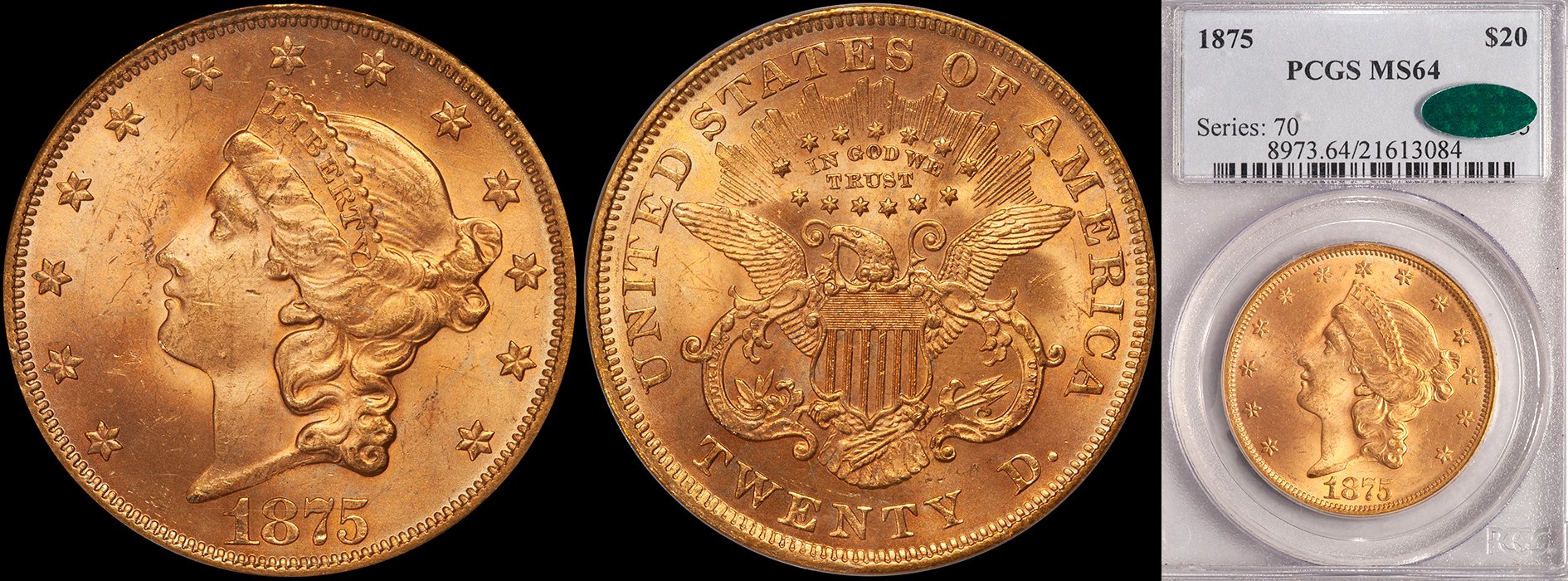"Why Did You Pass On My Coin?" A Few Quick Thoughts On Why I Buy What I Buy
/I was recently offered a coin by a dealer who I’m trying to cultivate as a potential source for my network of suppliers. I had told him to stop by my table at any show we were at together, and that I’d eagerly examine what he had available.
1866 $20.00 PCGS MS60 CAC (not the item in the blog)
Towards the middle part of the event, he came up to my table and handed me a coin. As he passed it off to me, he stated that “this is a real Doug Winter-style coin, it’s dirty and original and you should like it.”
The coin was an 1866 Type Two $20 graded MS60 by PCGS. The coin was totally acceptable for the grade and the price was a little on the high side but it was a number I could work with. Although I really should have bought the coin as a courtesy purchase, I passed on it.
The other dealer looked crestfallen.
“Why did you pass on my coin?” he said with his shoulders slumping.
I didn’t give him the full litany of what made me pass on it and I had almost forgotten about this incident until I just realized that in the month-plus since this occurred, he hasn’t offered me another coin.
So, why did I pass on it?
Here was my reasoning.
It is very challenging to sell just about any coin graded MS60, unless it is a major rarity or if it is in an old holder and it’s conspicuously undergraded.
Big coins like $20 Libs are especially difficult to sell in MS60 as the vast majority of said coins have terrible eye appeal due to heavy abrasions. Some smaller coins have decent eye appeal in this grade and I’ve always assumed these were pieces which the graders at PCGS or NGC were split on (some at 58, some at 61), and MS60 was a compromise.
In MS60, the 1866 isn’t a cheap coin. The PCGS Guide is $10,000 in this grade and a decent non-CAC PCGS example in this grade is certainly worth $7,500.
Date collectors of Liberty head double eagles generally fall into two camps: those with limited resources, and those with virtually unlimited resources. The first group would much rather have an 1866 in AU55 or AU58 at $4,500-5,500. The second group would want this coin in MS62 at $20,000+, or they might even go after a coin like the PCGS MS63 which brought $48,000 in the Heritage 10/2020 sale.
Ultimately, the problem with this MS60 (even if it was approved by CAC) is that it doesn’t appeal to either of these groups. It’s a little too expensive for the AU buyer, and definitely not nice enough for the Condition Census buyer.
Now, had this coin been a rare Type Two issue like an 1871-CC, I would have been thrilled to buy it. But that’s because it is notably rarer than the 1866 and far more popular. In fact, the only way I would pass on the 1871-CC in MS60 is if it were a horrible coin for the grade or it were 25+% overpriced (if it were 10% or even 20% overpriced I’d still probably be a buyer if it were nice).
Ultimately, coin dealers make buying decisions based on past experience. If I had owned a few PCGS MS60 1866 double eagles in the last couple of years and if I had sold them for a profit, I’d have bought the coin; provided that it was fairly priced and nice enough for me. My experience has shown me that this coin is not a good seller for me, and thus my decision to pass on it.
Does this much thought go into every purchase that I make? Yes, actually, but a much quicker pace than what I’m recounting here. I can tell you with pretty scary accuracy how many examples of a certain date in a certain grade I’ve handled and how well I’ve done with them. This is why I have favorite dates; as do virtually all dealers. As a wholesale seller, it’s your job to figure out which dates I’m a sucker for and which I’ll relax my quality standards for…

















